I played the Tom DeLonge Starcaster and expected to feel nostalgic – but this smartly designed signature has given one of Fender’s most unpopular guitars a new lease of life
blink-182 taught me how to play the electric guitar 20 years ago, but DeLonge’s long-awaited signature model is no throwback – it might just herald a bright future for the unloved semi-hollow
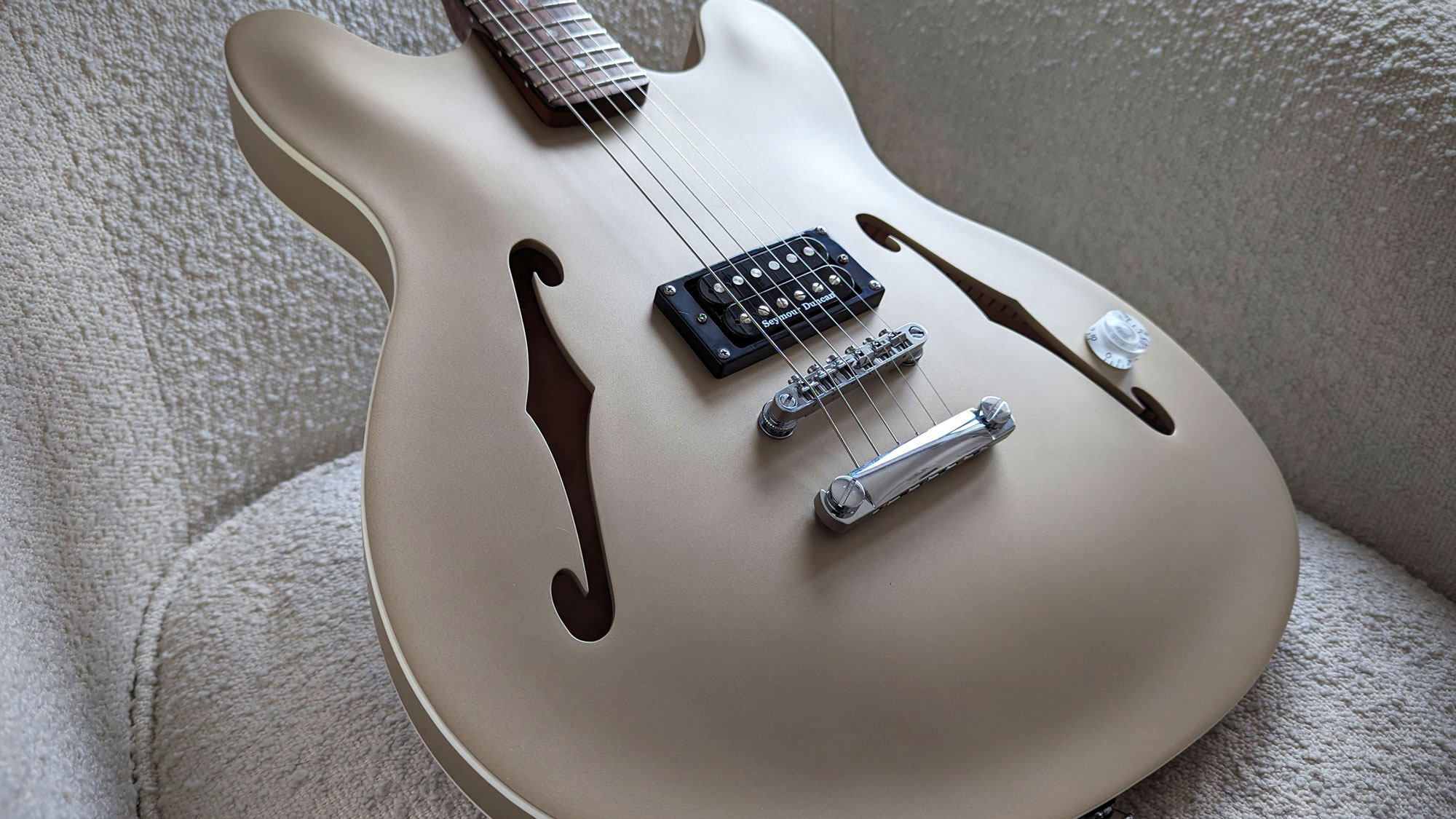
I was part of the generation that took their first steps on electric guitar by learning blink-182 songs.
All the Small Things taught me power chords. What’s My Age Again? was my first frustrating encounter with string skipping. I learned the catalog front to back – M+M’s’ whip-fast pull-offs and Carousel’s frenetic scale runs – before, 20 years ago, blink-182 became one of the first bands I ever saw live… although by that stage DeLonge had switched to his new beau, a signature Gibson ES-333.
And that’s why writing about Tom DeLonge’s return to Fender in late 2022 gave me such a heady rush of nostalgia. This was the hero of my foundational guitar-playing years, returning to the company whose instruments accompanied him for blink’s biggest moments.
More exciting still was the fact that DeLonge hadn’t just revisited his signature Strat of yesteryear for his homecoming. Instead, he’d sought to reinvent one of Fender’s most unloved instruments, the Starcaster, with his own take on the design finally landing earlier this week for a cool $1,199.
When it was first released in 1976, the Starcaster was Fender’s attempt to take a slice of the semi-hollowbody guitar market – which was, at the time, considered very much Gibson’s domain.
Yet the model’s appearance was out of keeping with the altogether classier ES-335, and guitarists didn’t take to the offset maple body and black fin headstock. There were other specs that deviated from convention, too: the hardtail bridge, CBS-era three-bolt neck joint and five closely spaced control knobs, including a master volume. It was a step too far for traditionalists, and the guitar was discontinued after just four years.
In the decades since, the Starcaster has achieved cult status at the hands of Radiohead’s Jonny Greenwood and The Killers’ Dave Keuning. Limited production runs of the instrument have come and gone, and Squier still makes a trio of distinctive Starcaster models. But, as I discovered upon getting my hands on an early review model, none of these are as successful as DeLonge’s take.
Get The Pick Newsletter
All the latest guitar news, interviews, lessons, reviews, deals and more, direct to your inbox!
DeLonge and winding road
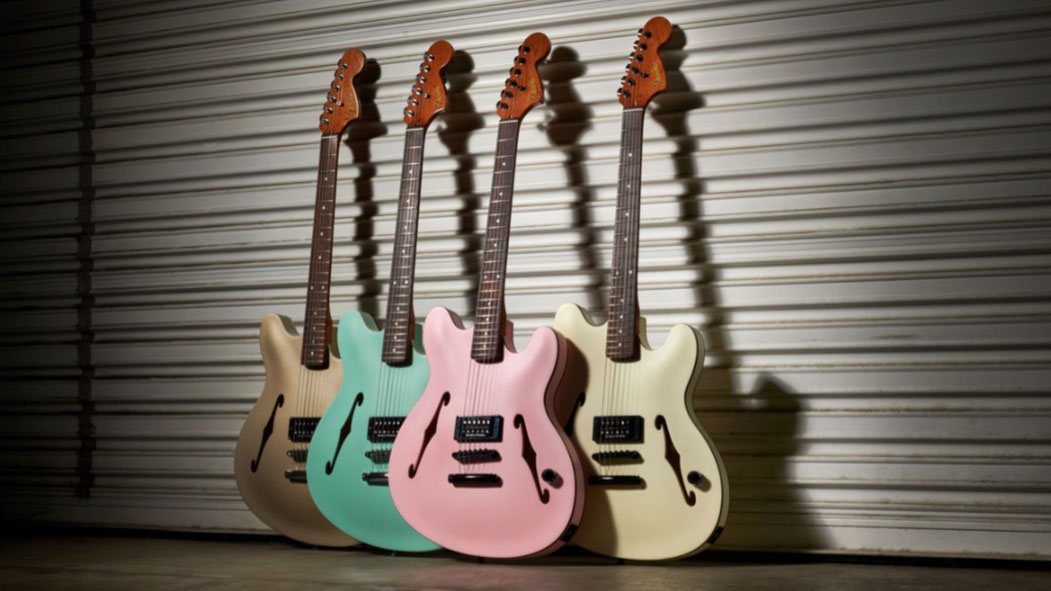
DeLonge may have agreed to the Starcaster shape purely because of its name – as if UFOs ever don’t factor into his decision-making – but it does neatly marry the best parts of his two previous signature guitars.
So, you get the semi-hollow body – offset for extra cool points – paired with bolt-on Fender playability, and a single bridge humbucker: Seymour Duncan’s overwound PAF-inspired SH-5 Custom.
There are some aesthetic considerations, too, with the Adjusto-Matic bridge and tailpiece offering a classier appearance, while the oversized ’70s-style Fender headstock will be a relief to naysayers of the Starcaster’s OG black fin, topped off by a very welcome set of locking tuners.
Perhaps most importantly, it all looks right. While previous models have been decent guitars, this is the first time a Starcaster has felt desirable. It helps that DeLonge picked out four delectable satin finishes for the model: Surf Green, Shell Pink, Shoreline Gold and Olympic White.
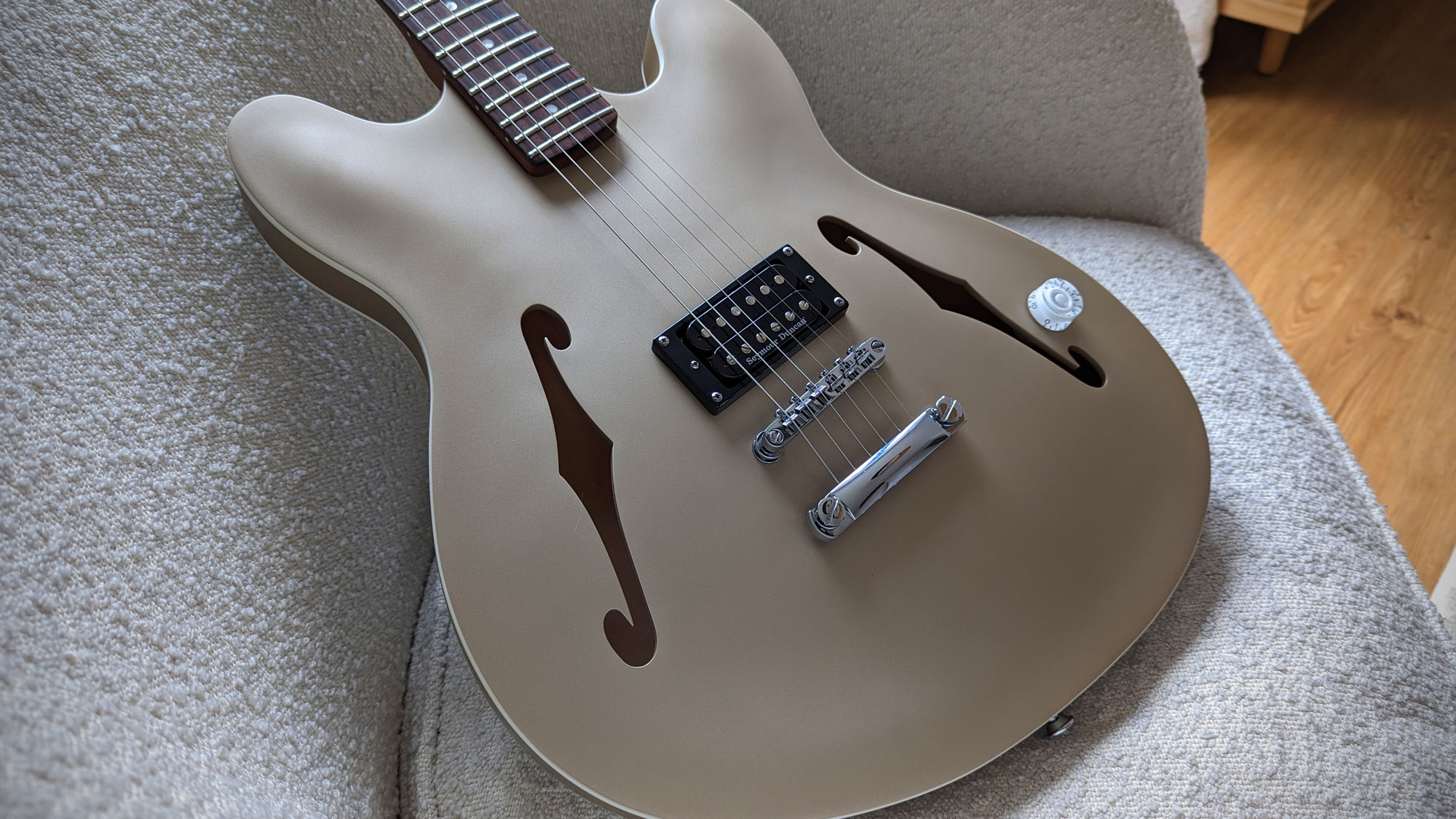
Having long harbored hopes for the flagship pink, I was a little disappointed when I pulled my review model out of the box: Shoreline Gold. Dammit (heh). But the white binding does make it pop in person. It’s spoiled only slightly by the out-of-place white control knob.
Its modern C-shaped neck is the kind of roasted maple appendage that wouldn’t feel out of place on your average Strat, especially paired with the 12”-radius rosewood fingerboard. Compared with the neck on the other big semi-hollow du jour, Epiphone’s long-awaited Dave Grohl DG-335, it’s a slinkier playing experience that rewards faster left-hand acrobatics than this model has any right to host. However, like the Grohl model, the neck is gloss-finished, which feels a little incongruous here given the sleekness of the body’s satin.
While I fully expected to be inspired to launch straight into the blink back catalog, the contemporary neck shape and feel had me playing like, well, me – which mostly means lots of legato noodling and moody drone notes. This isn’t always the case with a lot of guitars I pick up for review: give me a Strat, and I’m in dangerously Hendrixian territory. A Les Paul will always conjure Page first. A 335 is situated in blues or big-chord town. This felt like more of a blank canvas.
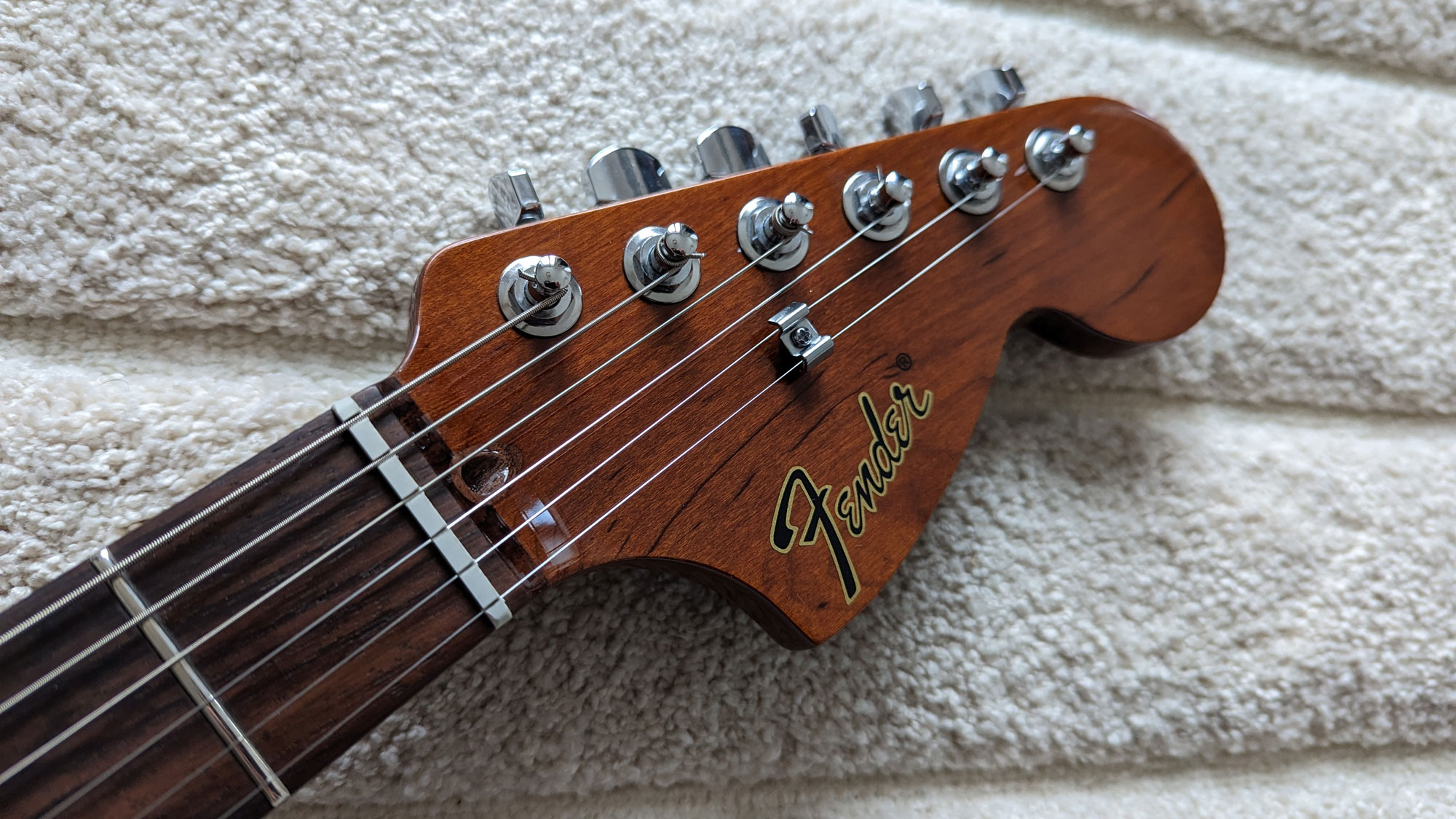
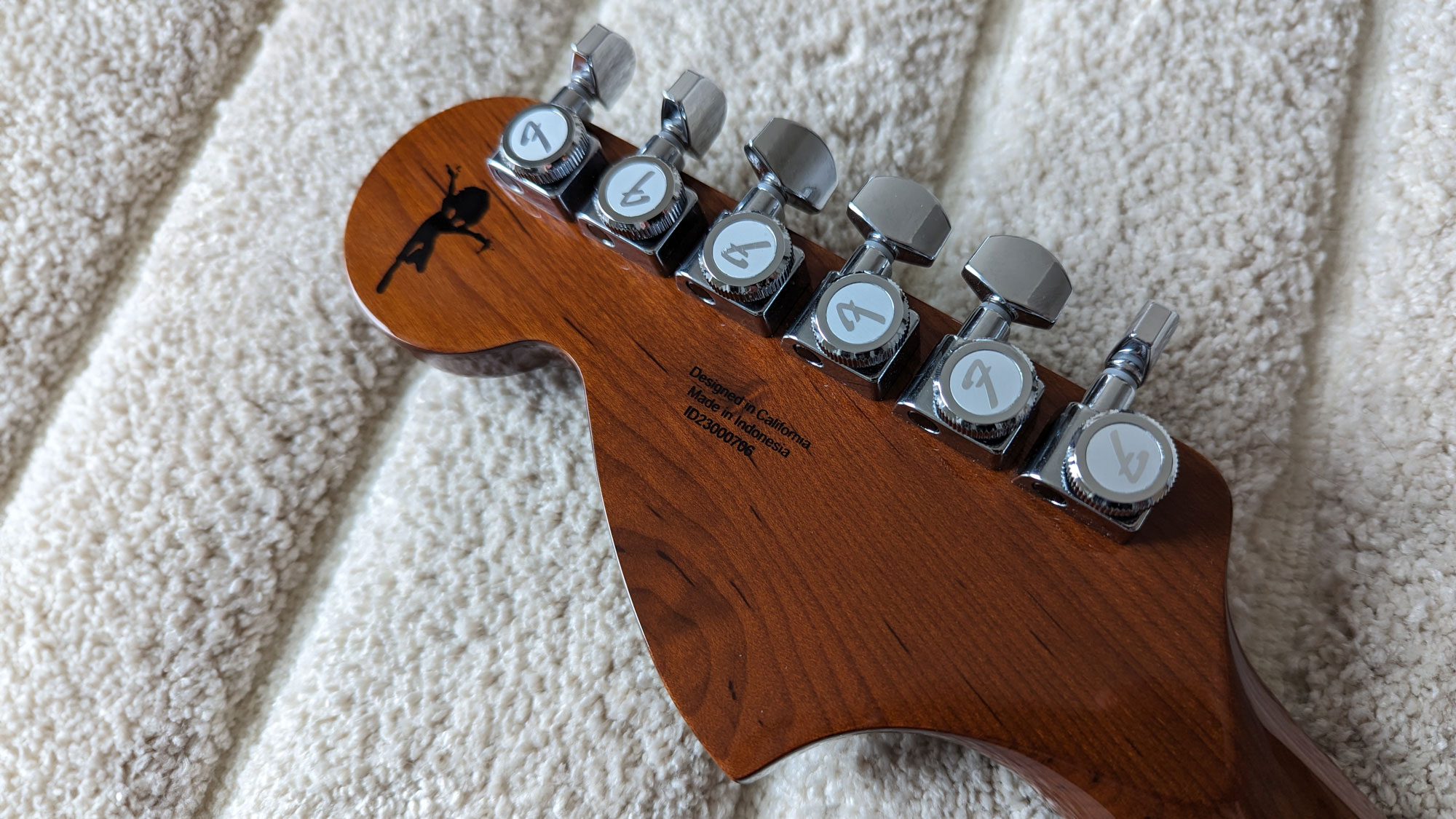
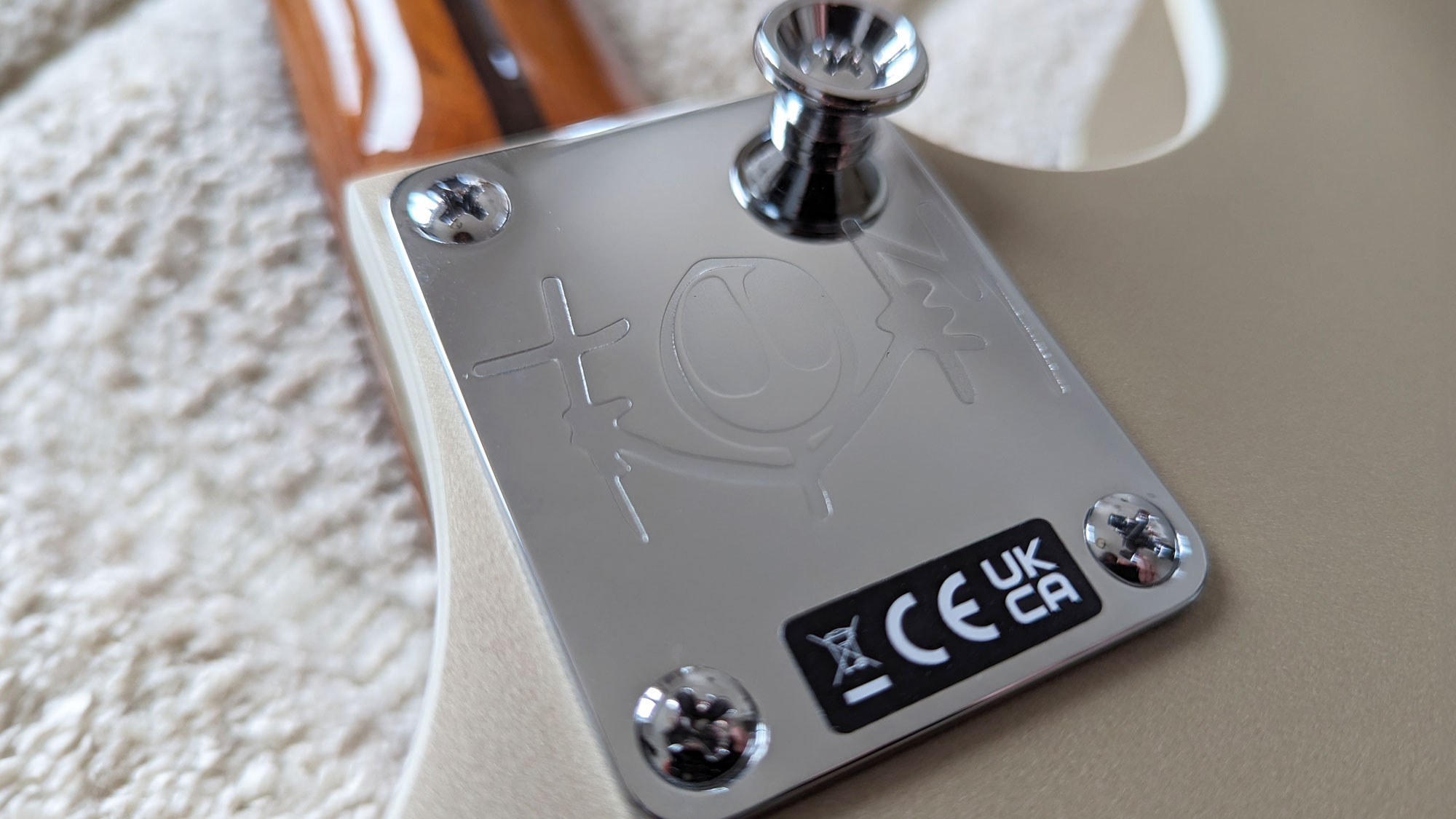
That lonely Seymour Duncan pickup lets you paint with your own palette, too – especially compared with the TD Strat’s gratuitously high-output Invader. With a vintage hot output, distorted palm-muting is immensely satisfying, but the inclusion of a treble bleed circuit – which prevents the tone from darkening when the volume knob is wound down – aids its flexibility (even if the knob itself is positioned a little too far out of the way for easy volume swells).
This guitar could cope in any hard-rock scenario you can throw at it – you need only look to Wolfgang Van Halen to hear what a semi-hollow is capable of in heavier settings. Granted, there’s not quite the ‘grab-a-sandwich-and-come-back’ sustain of a set-neck, but the bolt-on joint yields a lighter, punchier tone that’s a big plus for recording, particularly if your bass player likes their tone on the treblier end of the EQ spectrum (we’re looking at you, Mark Hoppus).
To the Stars

Tom DeLonge was wise to keep his signature off his Starcaster’s headstock – there’s only that custom neckplate and rear-headstock graphic to signify his association. Combined with the guitar’s inarguably impressive Indonesian build – coming out of the same factory as Squier’s current-production Starcasters – it points not only towards a new future for the Starcaster, but Fender’s signature line in general.
It’s indicative of the new concept of ‘premium offshore’ – a topic my esteemed colleague Matt Parker has written about at length – as evidenced by this year’s most hyped Fender being produced in Indonesia, and the hottest Epiphone being manufactured in China. As build quality across the world goes up, the location of manufacture matters less to consumers – and the success of this model will be a fascinating test case.
This is a significant release in other ways, too: Tom DeLonge’s reimagining of the Starcaster has finally given Fender’s also-ran semi-hollow its own identity. Unlike the shape’s original ’60s launch, the TD Starcaster isn’t trying to steal away market share – it certainly doesn’t look like the semi-hollows of yore. Instead, it taps neatly into the ongoing offset guitar boom – and those pastel finishes could not be more on trend.
Given the year-and-a-half of fervor surrounding the model, it could even lead to a Starcaster renaissance. Just imagine a dual-humbucker version without the DeLonge branding – the semi-hollow for guitarists who don’t like semi-hollows. The semi-hollow for offset fanatics. And with Fender’s Indonesian factory ramping up production for this signature model, it would be a logical next step.
Whatever happens, the Tom DeLonge Starcaster’s potential reach extends far beyond Blink-182 fans. It’s a streamlined, unashamedly modern electric guitar – and DeLonge’s decision to throw out the traditional spec rulebook is key to its success.
As the guitarist muses in Fender’s promo video for the new model, “This guitar shows my evolution as a player but also has the hallmarks of where I came from and what I’m about.” And those sentiments apply to the Starcaster as a whole – I guess this is growing up…
- For more information on the Tom DeLonge Starcaster, head to Fender.com.

Mike is Editor-in-Chief of GuitarWorld.com, in addition to being an offset fiend and recovering pedal addict. He has a master's degree in journalism from Cardiff University, and over a decade's experience writing and editing for guitar publications including MusicRadar, Total Guitar and Guitarist, as well as 20 years of recording and live experience in original and function bands. During his career, he has interviewed the likes of John Frusciante, Chris Cornell, Tom Morello, Matt Bellamy, Kirk Hammett, Jerry Cantrell, Joe Satriani, Tom DeLonge, Ed O'Brien, Polyphia, Tosin Abasi, Yvette Young and many more. In his free time, you'll find him making progressive instrumental rock under the nom de plume Maebe.
“It combines unique aesthetics with modern playability and impressive tone, creating a Firebird unlike any I’ve had the pleasure of playing before”: Gibson Firebird Platypus review
“This would make for the perfect first guitar for any style of player whether they’re trying to imitate John Mayer or John Petrucci”: Mooer MSC10 Pro review










